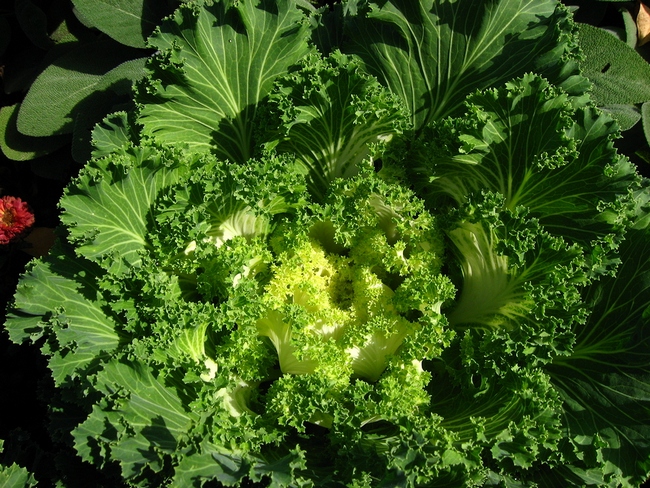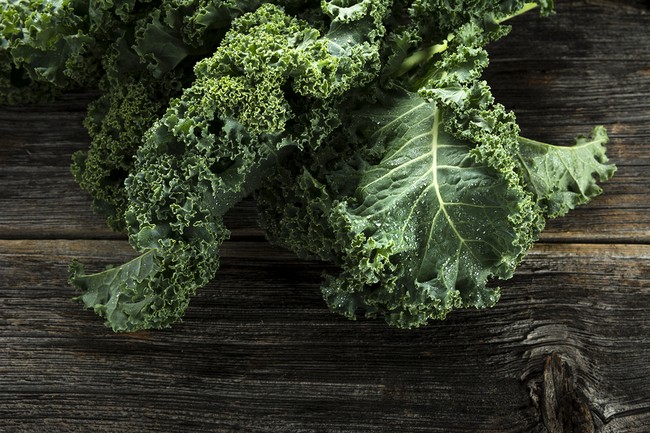- Make It Yourself Lavender Heart-Shaped Bath Bombs!
- 20 Things You Never Knew About “Down There”
- 12 Best Foods For Those Suffering From Arthritis Pain
- 12 Personal Hygiene Mistakes Almost Everyone Makes (Mom Never Told You About #4!)
- 15 Medicinal Plants And Herbs From The Cherokee People
- 12 Mind-Blowing Benefits Of Drinking Coconut Water During Pregnancy
- 12 Outstanding Winter Foods That Won’t Fatten You Up Like A Christmas Turkey
The Unexpected Health Benefits Of Kale!

Photo credit: bigstock.com
There are many foods which have been labelled “superfoods” in recent years. Blueberries, turmeric and pomegranates come to mind. But one perhaps less glamourous addition to the collection of famous edibles is a green vegetable which has taken the world by storm. We’re talking about kale.
Kale has been consumed for thousands of years and became a staple of European and Asian diets due to its high vitamin content and its ability to withstand colder climates. From there it was brought to the New World and every corner of the Earth. However, kale never quite achieved the universal familiarity of other greens like spinach or lettuce. In recent years, however, the vegetable has achieved a surge in popularity, in large part due to frequent mention on the Joe Rogan Experience podcast. Rogan’s kale shake recipe introduced kale to millions of people who had never heard of it before, and between this and hipster culture’s embrace of farmer’s markets, it has become a much more popular item in both solid and puréed form. In this article, we’ll explore what makes kale so special, and why it is almost guaranteed that you’re not eating enough.
Kale is a member of the Brassica family of vegetables and is related to other vegetables like Brussel sprouts, cabbage, cauliflower, and broccoli. There is more than one type of kale, and its appearance can vary significantly depending on the variety you’re dealing with.
The standard “common” kale has curly, frilly-looking leaves. It has a strong, somewhat spicy and bitter taste when eaten raw, and makes an excellent addition to salads and sautéed dishes. The second most common variety is Italian or “dinosaur” kale, so called due to the scaly appearance of its large, flat leaves. Other varieties include Chinese, Siberian, Red Russian, and bright purple Redbor kale.
Regardless of which variety of kale you choose, they each offer an amazing quantity of health benefits packed into one tasty and versatile vegetable.
1. Kale is loaded with vitamins
Kale is one of the most vitamin-rich foods you can possibly eat. Everyone knows that oranges are a good source of vitamin C, which boosts the immune system and prevents illness. But did you know that a single serving of kale (1 cup, or 67 grams) offers an astounding 137 percent of the recommended daily amount? That’s amazing!
Kale also is very rich in vitamin A, which plays a large role in maintaining healthy vision. That same 1-cup serving offers around 10300 international units (IU) of vitamin A, approximately 206 percent of the recommended daily amount. Finally, kale is also a great source of one vitamin that is very difficult to get enough of: vitamin K. This essential nutrient plays an important role in heart health, building and maintaining bone strength, and other bodily functions. One cup of kale provides around 550 micrograms, or an incredible 684 percent of the minimum recommended amount. That’s fantastic, considering most people are not getting enough vitamin K in their diet at all.
Continue to Page 2

Photo credit: bigstock.com
2. Kale also has quite a lot of calcium
In fact, this amazing vegetable actually offers more calcium per calorie than milk! It’s common knowledge that calcium plays a critical role in building strong bones, growth during childhood, and preventing degenerative conditions like osteoporosis. Kale’s calcium content alone is enough reason to eat more of it.
3. Kale is rich in antioxidants
Oxidative stress on the cells is what causes the aging process, and can contribute to certain forms of disease. It is the ultimate irony that taking in oxygen—the very process that keeps you alive—is ultimately what kills you. Special compounds called antioxidants can counteract the effects of oxidative stress on the cellular level, ward off disease and improve your overall health. Antioxidants are found in many types of fruits and vegetables, and kale is no exception. In fact, it is one of the most antioxidant-rich foods you can eat! The flavonoids and carotenoids found in kale can defend against many types of disease, and even lower your risk for developing cancer.
4. Kale fights inflammation
Inflammation is a natural and necessary response to disease and injuries. However, the modern diet, which is excessively heavy in inflammatory omega-6 fatty acids, can trigger this physiological response when it isn’t required. Chronic inflammation is associated with increased risk for all kinds of diseases, including cancer. Kale is rich in omega-3 fatty acids, which have powerful anti-inflammatory properties and counteract these effects.
READ ALSO: Choosing The Healthiest Greens For Your Salad Infographic
There are many other benefits to kale, but these four alone secure its spot in the superfood hall of fame for all time. Pick some up today and take your health to the next level!
References:
































